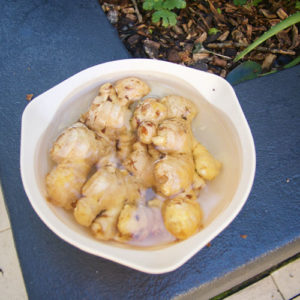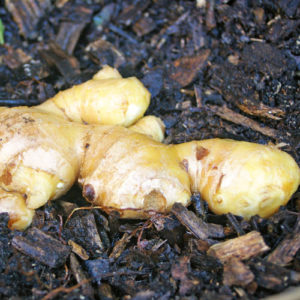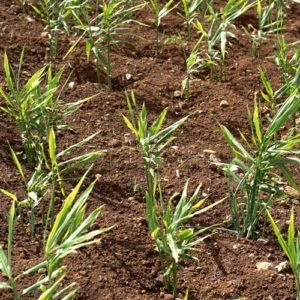How To Grow Ginger
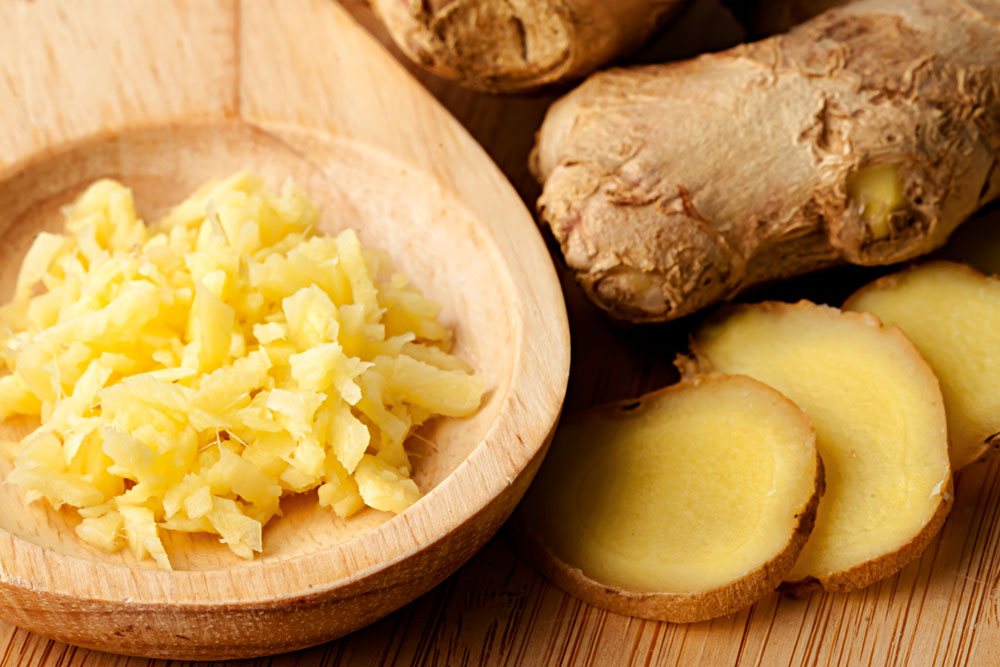
Ginger has been used in Asia for over two millennia to flavour food and drinks. It is an herbaceous perennial, meaning the leaves die down in autumn.
It has a hot, spicy taste without the burn of chilli and many health-giving properties, such as stimulating the heart, settling the stomach, and improving digestion and circulation.
The plant has a long history as a treatment for morning sickness and other types of nausea. Confucius was said to have eaten fresh ginger as a tonic with every meal.
Edible ginger is Zingiber officinaleand the part used for cooking is a type of root called a rhizome, which can be lifted, split into smaller pieces then replanted each spring.
Versatile in the kitchen, ginger can be used freshly grated in stir-fries, curries and desserts, or kept dried and powdered for cakes and puddings.
It can be used to make a tea or brewed into beer, or preserved for serving with desserts or Asian food.
TIP Ginger can add an energising dash of flavour to basic dishes such as pumpkin soup or ice-cream.
Storing fresh ginger
Fresh ginger root can be stored unpeeled in a Ziplock bag in the fridge crisper for two months, just cut off pieces to peel and use finely grated.
For a ready-to-use supply, peel the rhizomes and cut into chunks then put in a clean glass jar and cover with sherry or vodka before sealing tightly.
To dry ginger, peel and cut into 5mm thick slices then put on a wire rack in the oven on the lowest heat setting for 10 to 15 hours, turning every three hours. Cool and store in an airtight container for a year
Raising ornamental ginger
Closely related to edible ginger, the ornamental varieties are prized for their versatility and spectacular flowers.
They grow best in tropical or subtropical areas and are effectively pest-free.
Blue ginger
- Grows up to 2.5m high
- Not a true ginger but has fleshy green leaves and ginger-like stems
- Bright purple-blue flowers appear in autumn
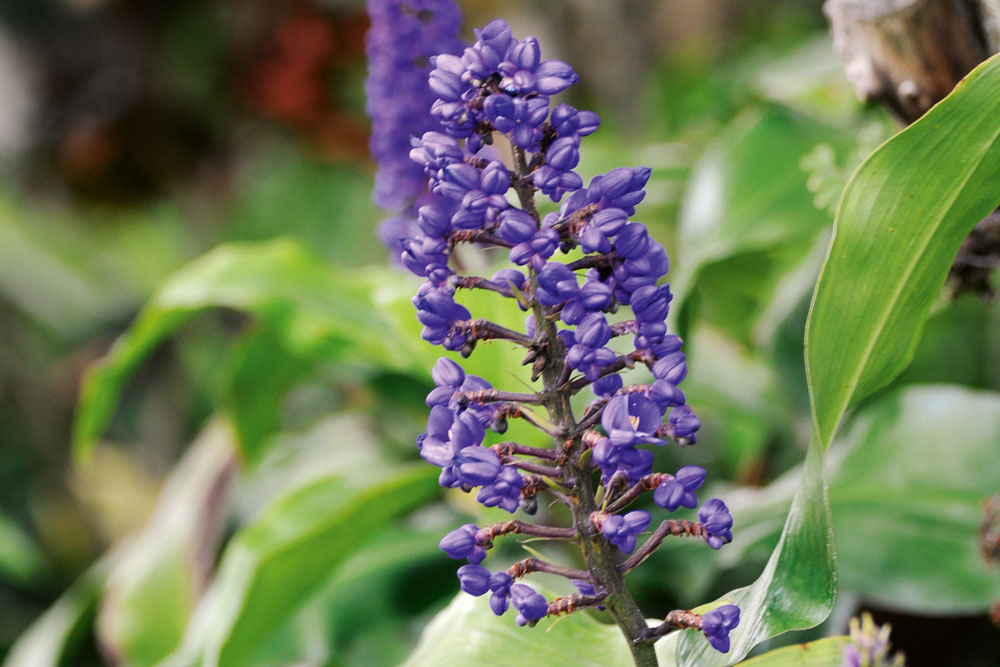
Blue ginger has bright purple-blue flowers that appear in autumn. Image: Getty Images
Butterfly ginger
- Grows up to 2m high
- Thrives in shady conditions
- Tolerates cold conditions
- Bears highly fragrant white flowers in summer
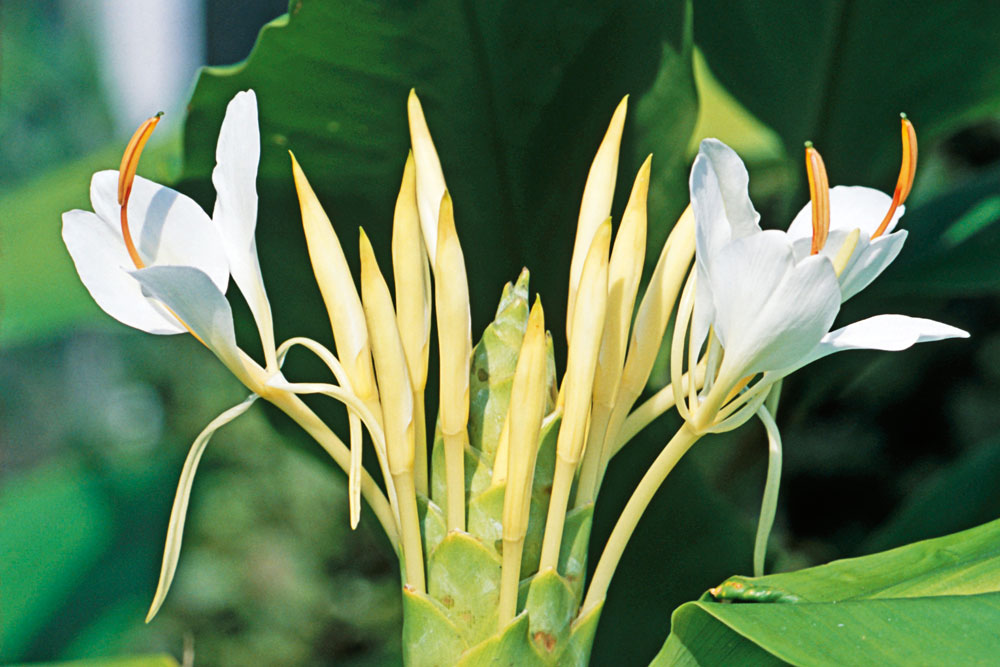
Butterfly ginger bears highly fragrant white flowers in summer. Image: Getty Images
Beehive ginger
- Grows over 2m high
- Beehive-shaped bracts, or modified leaves, appear in summer
- The flower bracts turn from yellow-green to bright red
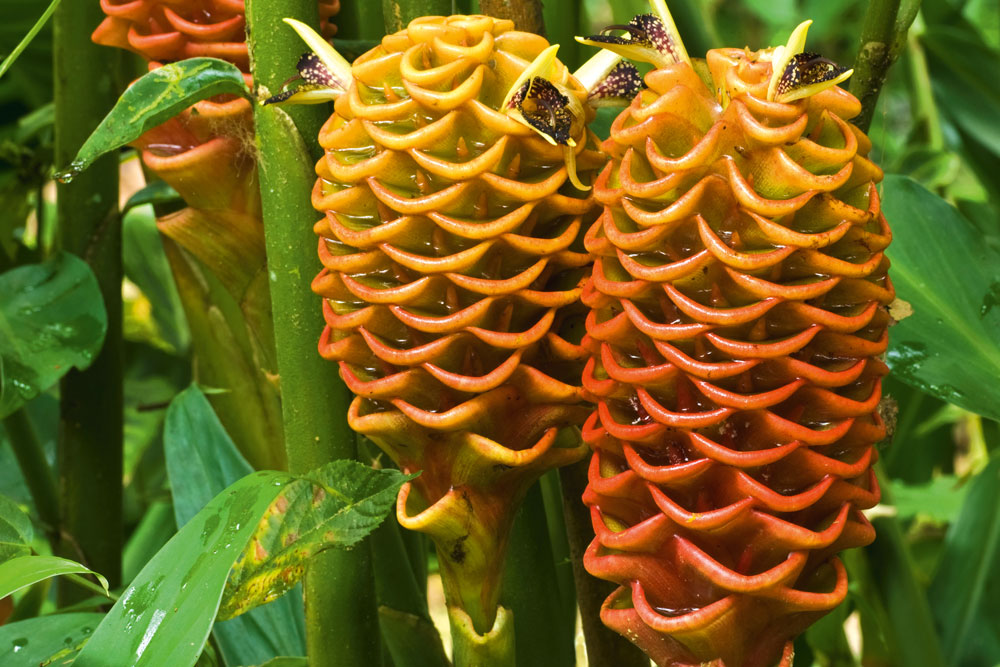
Beehive ginger flower bracts turn from yellow-green to bright red. Image: Getty Images
In the garden
Ginger likes warm, temperate and tropical areas, and moist, well-drained soil with added organic matter.
It can be grown indoors in colder areas or started in pots during the cooler months then moved outside.
The foliage grows to about 1.5m high with colourful flowers in summer and aromatic leaves.
It usually takes five to nine months to produce a decent crop, with ideal conditions consisting of temperatures above 30ºC and regular watering.
PLANT segments of the rhizome containing one or two buds in spring. Remove any rocks or soil clods to give rhizomes smooth passage.
WATER sparingly until shoots appear to avoid root rot, then weekly from late spring to autumn in dry periods.
KEEP the soil damp until a month or two before harvesting then stop watering for optimum root growth.
MULCH to keep weeds at bay, retain moisture in the soil and provide protection from the cold for ginger plants left in the ground over winter.
HARVEST fresh ginger in late summer and early autumn or, if drying, dig up about 10 months after planting.
WATCH FOR red spider mite, which attaches webbing to plants, making leaves go yellow and mottled, and possibly papery. Control by overhead watering and spray with a mite killer every week except in very hot weather.
Rhizome rot occurs in hot, humid conditions. Ensure good drainage and dig up and destroy any affected roots.
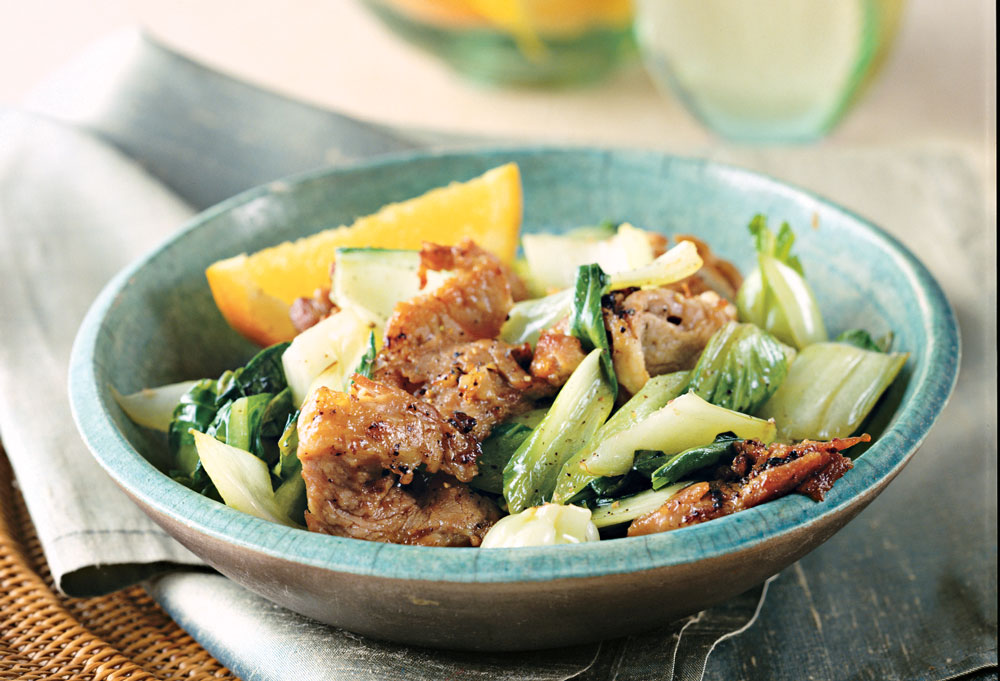
Click here for the recipe for this Stir-fried Ginger Pork dish
How To Grow Ginger From A Root
Ginger is grown from an existing root or rhizome, just like garlic or potatoes. Buy young, fresh, organic ginger to reduce the risk of contaminants. TIP Ginger likes moist not wet soil and filtered sunlight.
